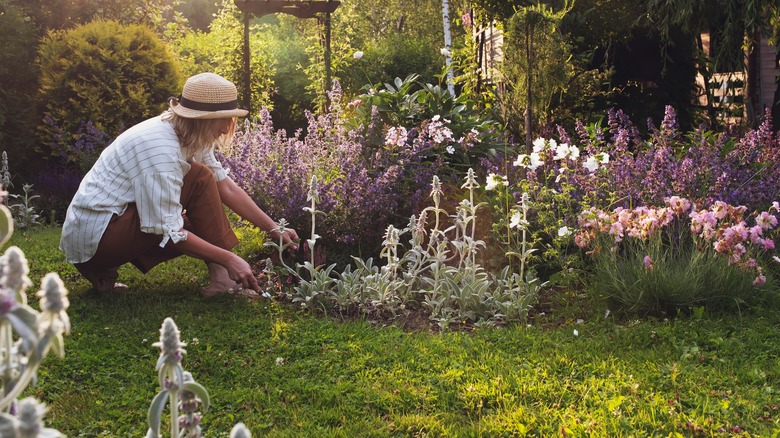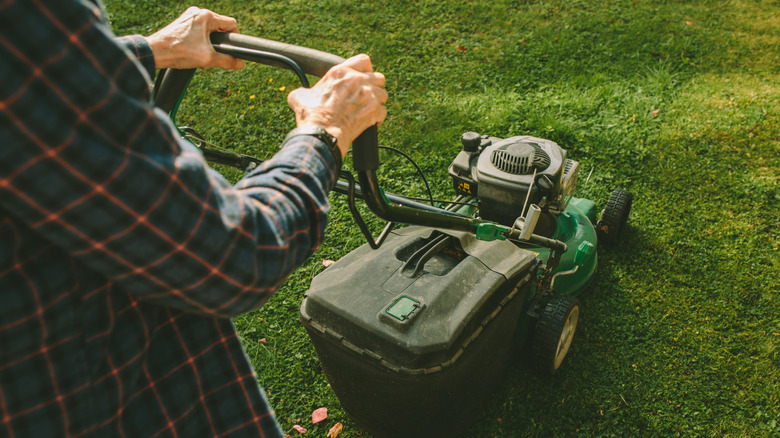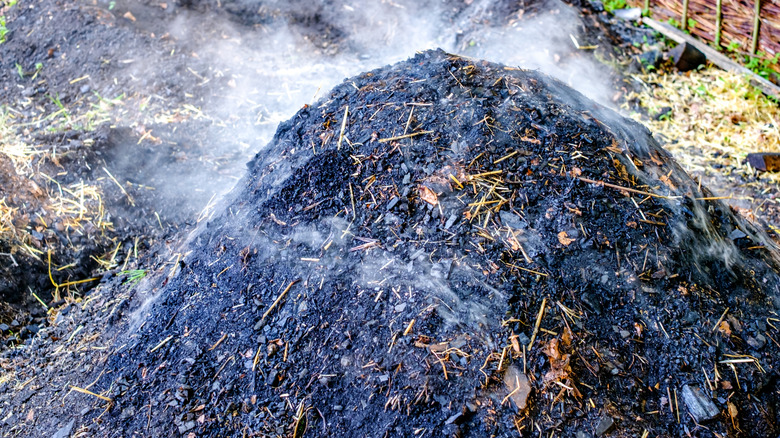How To Prevent Accidentally Reseeding Grass In Your Flower Beds
Although there several strategies to get rid of grassy weeds from your flower beds, if you're not vigilant, it can easily sneak back in. Common ways for this to happen are from using gardening equipment (such as the lawn mower or the shovel previously used for digging), or from improperly treated compost that has retained weed seeds. To prevent accidental reseeding of grass, always keep your gardening equipment clean and remove debris from your lawn mower. You will also want to make sure the organic content in your compost decays properly at optimum temperatures before you use it as mulch or for improving garden soil.
Unwanted grass not only ruins the aesthetics of your beautiful flower bed, but it can harm your flowers by competing for resources like sunlight and water. This can result in significant reduction in flowering, lack of growth, and plant death. Even after using landscape edges or a garden trench to create a barrier between the bed and lawn grass, you can still unknowingly spread grass seeds while using infected garden tools. Cleaning your equipment regularly will help prevent unnecessary grass from reseeding. Furthermore, you can also prevent lawn mower damage by going beyond basic cleaning requirements and having seasonal tune-ups.
Clean your lawn mower and gardening equipment to get rid of grass seeds
Grass and weed seeds accumulate in the undercarriage of your lawn mower, which, for a number of reasons, works as an excellent breeding ground for these seeds. The presence of nutrient-rich grass clippings, moisture, and warmth creates an ambiance suitable for storage as well as future germination of the seeds. The best way to avoid this is to get rid of residual grass clipping from the mower's blades and undercarriage. You should also clean off any debris that can act as a nutritious breeding ground for seeds.
To get rid of the clogged dirt or debris from your lawn mower, use a leaf blower or a scraper tool. You can also try this simple WD-40 hack to keep grass off your lawn mower blades. When it comes to frequency, cleaning your mower after every use is good practice. However, you must also deep-clean your machine, as well as other yard equipment, at the beginning and end of every season. Make sure you perform this task away from your flower beds.
Use better composting practices to decompose grass seeds
Another major source of accidental reseeding in flower beds is using improperly composted organic matter. Gardeners tend to use a lot of organic materials, such as animal manure, yard trimmings, and food waste for composting, some of which contain grass and weed seeds. However, if the pile does not reach the high temperatures during composting that can break all organic matter down (around 140 degrees Fahrenheit), the weed seeds present will remain active and spread to other areas, like your flower bed. Although you can keep your cool compost pile free of weed seeds with a technique called "pre-baking", where you let the weeds dry in the sun before adding it to the compost, it does not quite work with grasses like quackgrass.
Proper composting requires stringent procedures, and many gardeners ignore these requirements. To make sure you eliminate all the seeds during composting, maintain the right carbon-to-nitrogen ratio in the compost pile (four parts carbon to one part nitrogen), and have the proper moisture (40-60% by weight) as well as optimum pH levels (between six to eight). Furthermore, you need to turn the pile regularly for better distribution of oxygen and moisture. These conditions are essential for the temperature to rise in the pile as well as the functioning of microorganisms that break down organic residues. The longer the pile remains in the high temperature ranges, the more grass and weed seeds that get destroyed.


